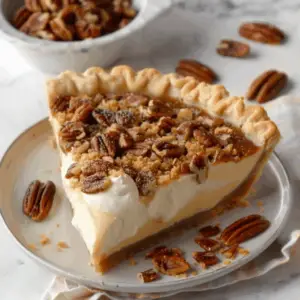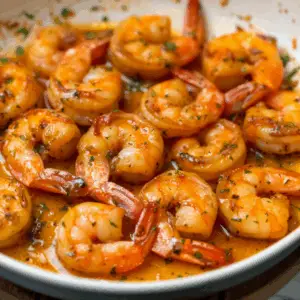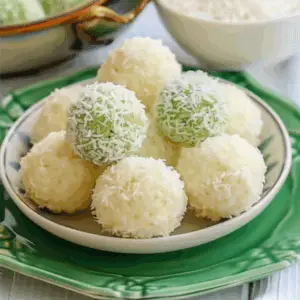Shrimp and Crab Pasta
Seafood pasta is a comfort food classic that brings the ocean to your plate with rich, velvety textures and bold flavors. Among the most loved dishes in this category is shrimp and crab pasta, a satisfying blend of tender shrimp, sweet crab meat, and creamy sauce layered over perfectly cooked pasta. Whether you’re preparing it for a weeknight meal or serving it to guests at a dinner party, this dish delivers a restaurant-quality experience with minimal effort.
What makes this creamy seafood pasta special is its ability to feel both luxurious and approachable. It doesn’t require complex ingredients or techniques, but still creates a dish that feels indulgent. The combination of heavy cream, Parmesan cheese, lemon zest, and fresh herbs transforms simple ingredients into something exceptional.
For those new to seafood cooking, this recipe offers an ideal starting point. With simple prep and clear steps, even beginners can master this meal. You can use fresh or frozen shrimp, and choose between lump crab meat or a more affordable alternative. The sauce is straightforward and forgiving—a smooth blend of dairy, citrus, and spice that allows the seafood flavors to shine through. Learn more about crab meat types and how they affect flavor and texture in recipes.
If you’re exploring seafood dishes or building your seafood pasta recipe board, check out these shrimp pasta ideas on Pinterest for more variations. This recipe fits perfectly into any collection focused on easy seafood dinners, creamy pasta meals, or coastal cuisine.
Whether you’re craving a cozy bowl after a long day or looking to impress with minimal prep, this dish is a guaranteed crowd-pleaser. As you continue through this guide, you’ll discover variations, prep tips, storage solutions, and even health-conscious swaps to make this shrimp and crab pasta your own.
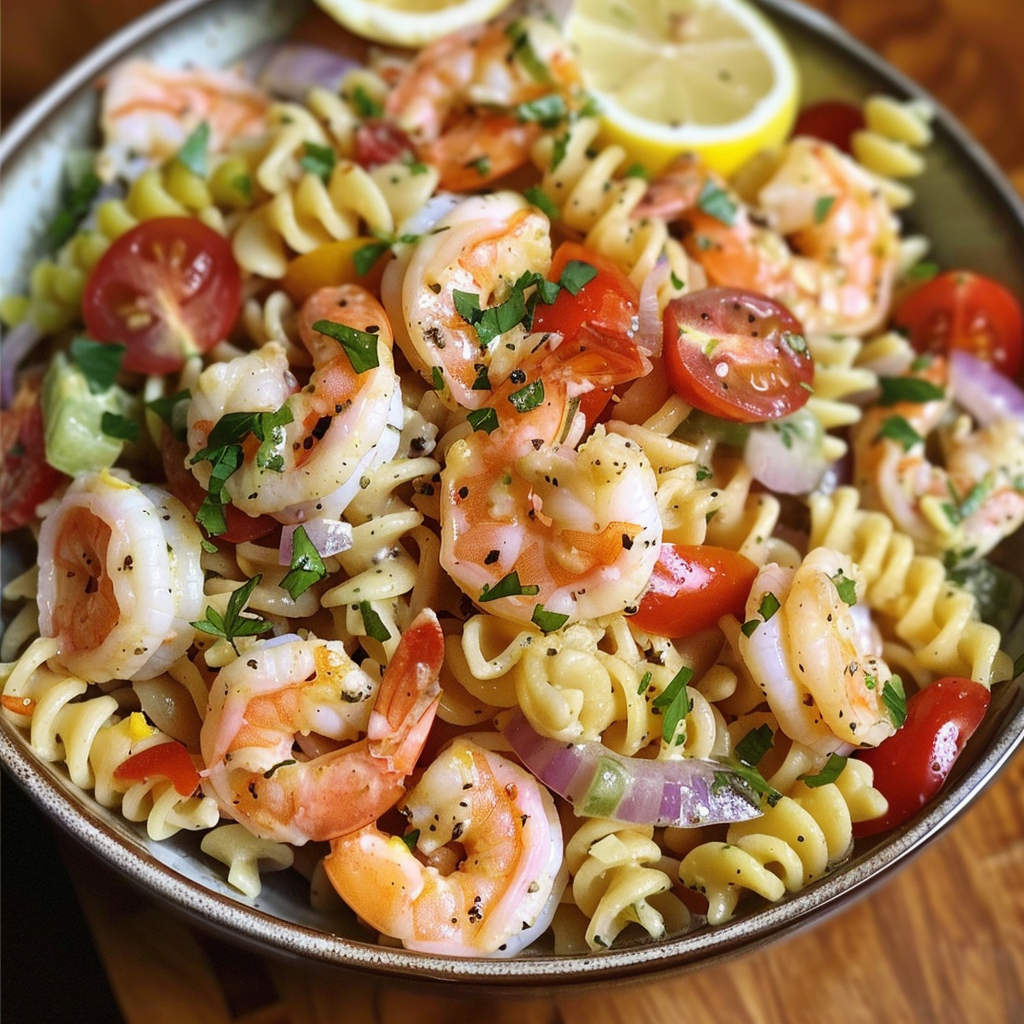
Key Ingredients Breakdown
Pasta Options: What to Choose
The foundation of any pasta dish is, of course, the pasta. For shrimp and crab pasta, the ideal choice is something long and sturdy enough to hold the creamy sauce without overpowering the delicate seafood. Linguine is a top pick thanks to its flat shape and smooth texture, allowing it to evenly distribute sauce and ingredients. Linguine pasta also has a slightly more refined mouthfeel than spaghetti, making it a favorite for seafood-based recipes.
Other options include:
-
Spaghetti – simple and widely available
-
Fettuccine – broader, great for thicker sauces
-
Angel hair – delicate, but may get lost in heavy sauce
If you’re aiming for a gluten-free version, swap in rice noodles or chickpea-based pasta, but be sure to monitor the cook time carefully.
Shrimp: Fresh vs. Frozen
Shrimp are the star protein in this dish, and choosing the right kind can make a significant difference. Opt for large shrimp, peeled and deveined, for a satisfying bite and ease of eating. Fresh shrimp offer the best texture, but frozen shrimp, when thawed properly, are an excellent and convenient alternative.
Tips for working with shrimp:
-
Use wild-caught shrimp when possible for better flavor
-
Avoid overcooking; shrimp should be just pink and slightly firm
-
Devein thoroughly to remove bitterness
Want to learn more about shrimp types and preparation? Visit the Shrimp Wikipedia page for a breakdown of varieties and their uses in cooking.
Crab Meat Types
Crab meat brings a sweet and briny richness to the dish. The most desirable type for creamy seafood pasta is lump crab meat, known for its tender texture and large flakes. That said, claw meat offers a stronger flavor, and imitation crab (made from fish) is a budget-friendly alternative.
Here’s a quick guide:
-
Lump crab meat – tender, flaky, ideal for pasta
-
Claw meat – more flavorful, slightly stringy
-
Imitation crab – affordable, good for meal prep
Learn more about the varieties and applications of crab meat here.
If you’re prepping meals ahead of time, imitation crab might hold up better over multiple days. For flavor-first cooking, fresh lump meat is worth the extra cost.
Flavor Enhancers
To elevate the sauce and balance the richness of cream, aromatic and acidic components are key. The following ingredients aren’t optional—they’re essential for depth:
-
Garlic – adds warmth and umami
-
Red pepper flakes – optional heat
-
Lemon juice and zest – brightness and balance
-
Fresh parsley – herbaceous finish
Lemon zest is particularly important and often overlooked. Not only does it enhance aroma, but it also balances the richness of the cream. Discover how lemon zest is used in cooking to bring brightness to dishes.
The Cream Sauce
The soul of this dish lies in its creamy, velvety sauce. It’s a luxurious blend of heavy cream and Parmesan cheese, brought to life with lemon zest and seasoning. The quality of the dairy products you use will significantly affect the final taste and consistency.
Key components:
-
Heavy cream – thick, rich, and stable when heated. Learn more about heavy cream and its cooking properties.
-
Parmesan cheese – opt for aged, grated Parmigiano-Reggiano for the best melt and depth of flavor. For background on its history and culinary use, see Parmesan cheese on Wikipedia.
The sauce should be simmered gently and never boiled, as boiling can cause the cream to separate. Stir consistently to keep it smooth, and add a little reserved pasta water to loosen if it becomes too thick.
Finally, finish the sauce with fresh parsley to cut the richness and offer a subtle herbal lift that brings all the flavors together.
Looking for creamy pasta variations? Browse creamy pasta ideas on Pinterest to explore how different herbs and proteins can change the tone of your sauce.
Step-by-Step Instructions with Pro Tips
Prepping the Pasta
Start by bringing a large pot of salted water to a boil. Use about 1 tablespoon of salt per 4 cups of water to ensure the pasta is properly seasoned. Add 8 oz of linguine or spaghetti and cook until al dente, which usually takes 8–10 minutes depending on the brand and pasta type.
Pro tip: Reserve ½ cup of pasta water before draining. This starchy water helps adjust the sauce’s consistency later without diluting the flavor. Once drained, lightly toss the pasta with olive oil to prevent sticking if not using immediately.
For a breakdown of how different types of pasta shapes influence sauce pairing, see this Wikipedia guide on linguine, a perfect match for seafood and creamy sauces.
Sautéing the Seafood
In a large skillet, heat 1 tbsp olive oil and 2 tbsp butter over medium heat. Once the butter has melted, add 3 cloves of minced garlic and ½ tsp of red pepper flakes (optional). Cook for about 1 minute until fragrant, being careful not to brown the garlic.
Add ½ lb of peeled, deveined shrimp to the skillet. Season lightly with salt and pepper and cook for 2–3 minutes per side, until the shrimp are pink and opaque. Avoid overcooking—the shrimp should be tender, not rubbery.
Gently fold in ½ lb of lump crab meat and juice of ½ lemon. Cook for 1–2 more minutes to heat the crab through. Stir gently to avoid breaking up the delicate crab chunks. Then, remove the seafood from the skillet and set aside.
If you’re looking to expand your recipe board, save this to your seafood pasta recipe collection on Pinterest for inspiration and easy reference.
Building the Creamy Sauce
Using the same skillet (no need to clean it—those flavors are gold), pour in 1 cup of heavy cream and bring it to a low simmer. Stir continuously for 2–3 minutes to thicken slightly.
Add ½ cup of grated Parmesan cheese, stirring until the cheese is fully melted and the sauce is silky smooth. Incorporate 1 tsp lemon zest to brighten the flavor and balance the richness of the cream.
This combination creates a velvety, decadent base that complements the shrimp and crab perfectly. For additional ideas on how to modify or flavor creamy sauces, explore creamy pasta dishes on Pinterest.
Bringing It All Together
Add the cooked pasta to the sauce and toss gently to coat. If the sauce is too thick, stir in a tablespoon or two of the reserved pasta water until desired consistency is reached.
Return the cooked shrimp and crab mixture to the skillet, folding gently to distribute evenly. Let everything heat together for about 1 more minute. Taste and adjust seasoning with salt, pepper, or lemon juice as needed.
Before serving, sprinkle with 2 tbsp chopped fresh parsley for a vibrant finish. Plate immediately to preserve the freshness and texture of the seafood.
Want more ideas for building seafood-forward meals? Browse this seafood meal prep collection for creative prep-and-store strategies that keep flavors intact.
Cooking Tips and Tricks for Perfect Seafood Pasta
Crafting the perfect shrimp and crab pasta is about more than just following a recipe—it’s about mastering a few simple techniques that elevate flavor and texture. Here are essential tips and tricks to ensure your dish turns out restaurant-quality every time:
-
Don’t overcook the seafood
Shrimp cook quickly—about 2–3 minutes per side. Overcooking makes them rubbery. Similarly, crab meat is usually pre-cooked and only needs gentle warming. -
Build flavor in layers
Begin with garlic and red pepper flakes to infuse the oil. Add shrimp and crab after the aromatics bloom to deepen flavor. Incorporating seafood after the sauce forms can mute those savory notes. -
Use pasta water to adjust sauce
Reserved pasta water contains starch, making it perfect for loosening a thick sauce while keeping it cohesive. Add gradually to achieve your desired consistency. -
Balance the richness
Heavy cream and Parmesan can be intense. Lemon juice and zest cut through the heaviness and brighten the entire dish. Check out how lemon zest works in recipes to understand its impact on flavor structure. -
Grate cheese fresh
Pre-grated Parmesan often contains anti-caking agents that prevent melting. For the smoothest sauce, always grate it fresh. Learn more about Parmigiano-Reggiano and its culinary uses here. -
Use high-quality ingredients
Because this dish has few components, each one matters. Use fresh herbs, quality seafood, and reputable dairy products for the best outcome. Explore ingredient boards like shrimp pasta on Pinterest to see how ingredient quality influences presentation and flavor.
By following these cooking tips, you not only prevent common mishaps but also refine your kitchen skills for future seafood pasta recipes and beyond.
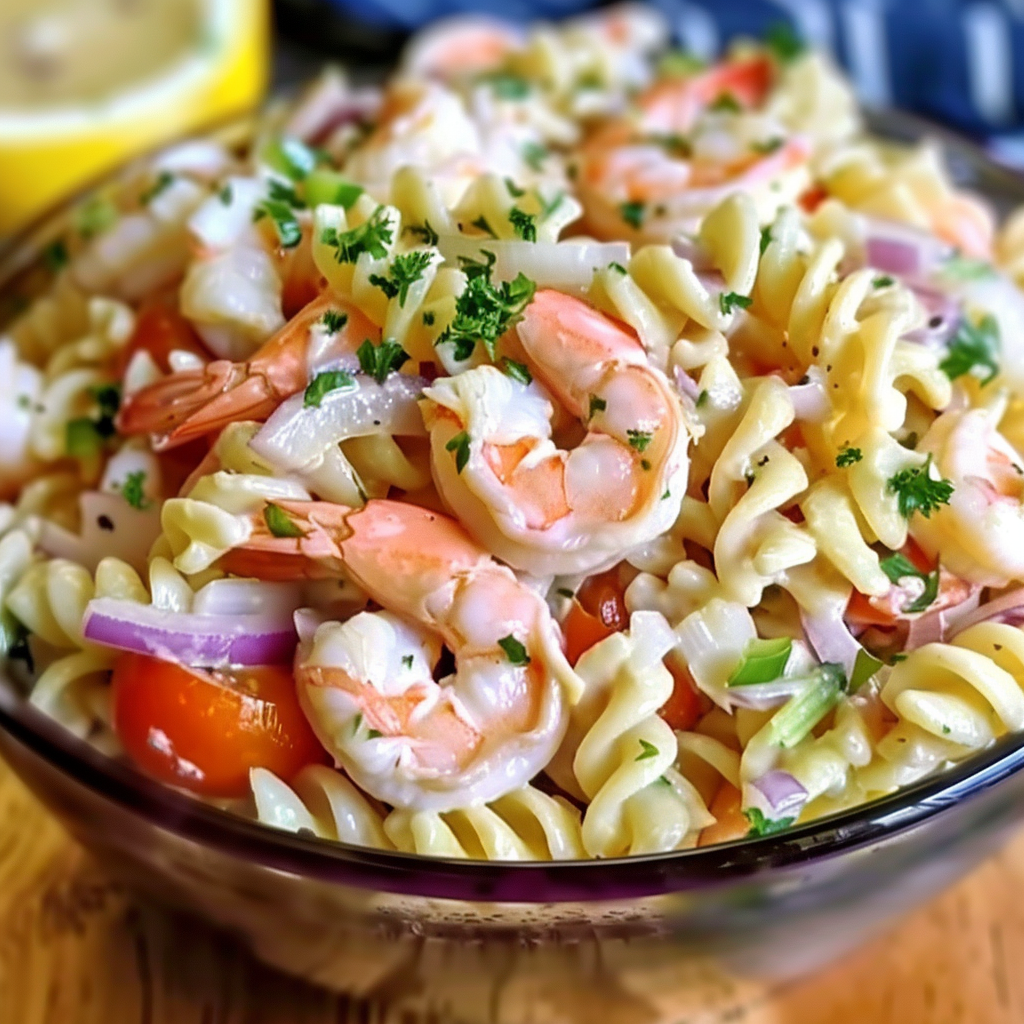
Easy Recipe Variations
Shrimp and crab pasta is versatile, making it ideal for customizing to your preferences or dietary needs. Whether you want a bolder flavor, a lighter sauce, or a completely different texture, these simple recipe variations will keep the dish exciting every time you make it.
Cajun Shrimp and Crab Pasta
For a spicy Southern twist, add 1–2 teaspoons of Cajun seasoning to the shrimp before sautéing. This gives the seafood a smoky, peppery kick. You can also stir in sliced andouille sausage for more heartiness and depth.
Tomato-Cream Seafood Pasta
Want to cut the richness of the cream without losing that creamy texture? Add ½ cup of crushed tomatoes or tomato puree to the cream sauce. This creates a rosé sauce that brings a slight acidity and vibrant color, balancing the sweetness of the crab.
Dairy-Free Version
Use full-fat coconut milk or cashew cream as a substitute for heavy cream. Replace Parmesan with a plant-based cheese or a sprinkle of nutritional yeast. This variation keeps the dish rich and satisfying while suitable for lactose-intolerant eaters.
Gluten-Free Option
Swap in gluten-free pasta, like rice noodles or lentil-based linguine. Double-check your other ingredients (especially broth, if used) to ensure they’re gluten-free. This version is great for dietary restrictions while still tasting indulgent.
Add-Ins and Substitutions
Customizing further? Try these:
-
Veggies: Stir in baby spinach, green peas, or sun-dried tomatoes for extra nutrients and texture
-
Alternative seafood: Swap crab for lobster, scallops, or even smoked salmon
-
Lemon herb butter: Add 1 tbsp of compound butter at the end for added richness and aroma
Get inspired by other creative seafood meal prep ideas on Pinterest and experiment with seasonal produce or spice blends to make this dish uniquely yours.
Serving Suggestions and Pairings
This dish pairs wonderfully with light sides and refreshing beverages that help cut through the richness of the cream sauce and enhance the seafood’s flavor.
-
Garlic bread: The classic side, perfect for soaking up extra sauce
-
Crisp salad: A fresh arugula or Caesar salad adds crunch and acidity
-
Roasted vegetables: Asparagus, zucchini, or broccolini add color and fiber
-
Wine pairing: A chilled Pinot Grigio, Chardonnay, or Sauvignon Blanc complements the dish’s creaminess and seafood sweetness
These additions transform a simple bowl of shrimp and crab pasta into a full and balanced meal suitable for date night, family dinners, or dinner parties. For more plating and side dish inspiration, explore seafood pasta dishes on Pinterest.
Meal Prep, Storage, and Reheating
This dish is great for next-day meals, but like many creamy pastas, it requires a bit of care when storing and reheating to maintain the best texture.
How to Store Leftovers
-
Place cooled pasta in an airtight container
-
Store in the fridge for up to 3 days
-
Avoid storing with garnish (like parsley); add fresh before serving
Freezing Tips
-
Not recommended due to the cream base, which may separate when thawed
-
If freezing is necessary, undercook pasta slightly and reheat gently with added cream or broth
Reheating Without Overcooking
-
Warm on stovetop over low heat
-
Add a splash of cream or milk to bring sauce back to life
-
Microwave: cover loosely and heat in 30-second intervals, stirring between
For visual meal prep inspiration, visit seafood meal prep boards on Pinterest.
Nutritional Info and Dietary Considerations
This recipe is rich and satisfying but can be adjusted for different dietary needs.
-
Calories per serving: Approx. 600–750 depending on portion size and ingredients
-
Protein: High-protein content from shrimp and crab
-
Fat: Primarily from heavy cream and cheese; swap for light cream or plant-based alternatives if needed
-
Carbs: Mostly from pasta; use whole wheat or legume-based pasta for added fiber
-
Allergens: Contains shellfish, dairy, and gluten unless modified
Looking for more ingredient alternatives? Browse dairy-free or low-carb creamy pasta ideas on Pinterest.
Common Mistakes to Avoid
Avoid these common pitfalls to ensure your shrimp and crab pasta comes out perfect every time:
-
Overcooking shrimp: They cook quickly and should be removed as soon as they turn pink
-
Boiling the cream sauce: High heat can cause separation; simmer gently
-
Skipping lemon juice: Acidity balances the richness—don’t leave it out
-
Using pre-shredded cheese: It won’t melt as well due to anti-caking agents
-
Overloading the pan: Cook seafood in batches if necessary for even searing
By watching for these simple errors, your dish will not only taste better but also look more appealing. See Parmigiano Reggiano for choosing high-quality cheese that melts beautifully in sauces.
FAQ Section
Can I use canned crab meat?
Yes, canned crab meat is a convenient alternative, especially for meal prep. Just make sure to drain it well and check for shells. For flavor and texture, lump-style canned crab is best.
What pasta works best with creamy sauces?
Linguine and fettuccine are ideal. They’re wide enough to hold the sauce without overpowering the shrimp and crab. Learn more about linguine and other pasta types to find your perfect match.
Can I make this dish ahead of time?
Yes. You can prepare the sauce and seafood a few hours ahead and refrigerate them separately. When ready to serve, cook the pasta fresh and combine everything in a skillet to warm through.
How do I make it less rich?
Use half-and-half instead of heavy cream, and reduce the Parmesan by half. Adding a splash of vegetable or seafood broth can also help thin the sauce while preserving flavor.
Is this recipe kid-friendly?
Absolutely—just omit the red pepper flakes and consider using a milder cheese. Kids love creamy pastas, and the seafood adds variety without being overwhelming.
How can I make it spicier?
Increase the amount of red pepper flakes or add a dash of hot sauce. Cajun or Old Bay seasoning also adds heat and dimension.
For more creative seafood pasta variations, browse shrimp pasta boards on Pinterest and build a custom version your whole family will love.
PrintShrimp and Crab Pasta Made Simple: Tips, Variations, and Meal Prep
This creamy shrimp and crab pasta is a rich and elegant seafood dish made with tender shrimp, sweet lump crab meat, and a luxurious Parmesan cream sauce, all tossed with perfectly cooked linguine. It’s the perfect recipe for a cozy dinner at home, date night, or even entertaining guests. Balanced with fresh lemon, garlic, and herbs, this one-pan pasta offers restaurant-quality flavor with easy, approachable steps.
- Author: Clara
Ingredients
For the pasta:
- 8 oz linguine or spaghetti
- Salt, for boiling water
For the seafood:
- 1 tbsp olive oil
- 2 tbsp butter
- 3 garlic cloves, minced
- ½ tsp red pepper flakes (optional)
- ½ lb large shrimp, peeled and deveined
- ½ lb lump crab meat (picked over for shells)
- Salt and pepper, to taste
- Juice of ½ lemon
For the sauce:
- 1 cup heavy cream
- ½ cup grated Parmesan cheese
- 1 tsp lemon zest
- 2 tbsp chopped fresh parsley
Instructions
- Cook the pasta in a large pot of salted boiling water until al dente. Drain and set aside.
- In a large skillet, heat olive oil and butter over medium heat. Add garlic and red pepper flakes and sauté until fragrant, about 1 minute.
- Add shrimp to the skillet, season with salt and pepper, and cook until they turn pink, about 2-3 minutes per side.
- Gently fold in the crab meat and lemon juice, cooking for another 1-2 minutes until heated through. Remove the seafood from the skillet and set aside.
- In the same skillet, pour in the heavy cream and bring it to a simmer. Stir in Parmesan cheese and lemon zest, whisking until smooth.
- Add the cooked pasta to the sauce and toss to coat evenly.
- Return the shrimp and crab to the skillet, gently mixing with the pasta and sauce. Cook for another minute to warm everything through.
- Sprinkle with fresh parsley before serving.
Notes
-
Use fresh shrimp and lump crab for the best texture and flavor.
-
Swap in gluten-free or whole wheat pasta to suit your dietary needs.
-
Add spinach, peas, or sun-dried tomatoes to increase nutrition.
-
For dairy-free, sub in coconut milk or cashew cream and skip Parmesan.
-
Reheat gently to maintain sauce consistency—add cream or pasta water if needed.
-
Pair with a crisp white wine and garlic bread for a complete meal.
-
Garnish with lemon zest and parsley right before serving for the best presentation.



